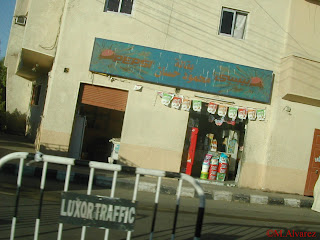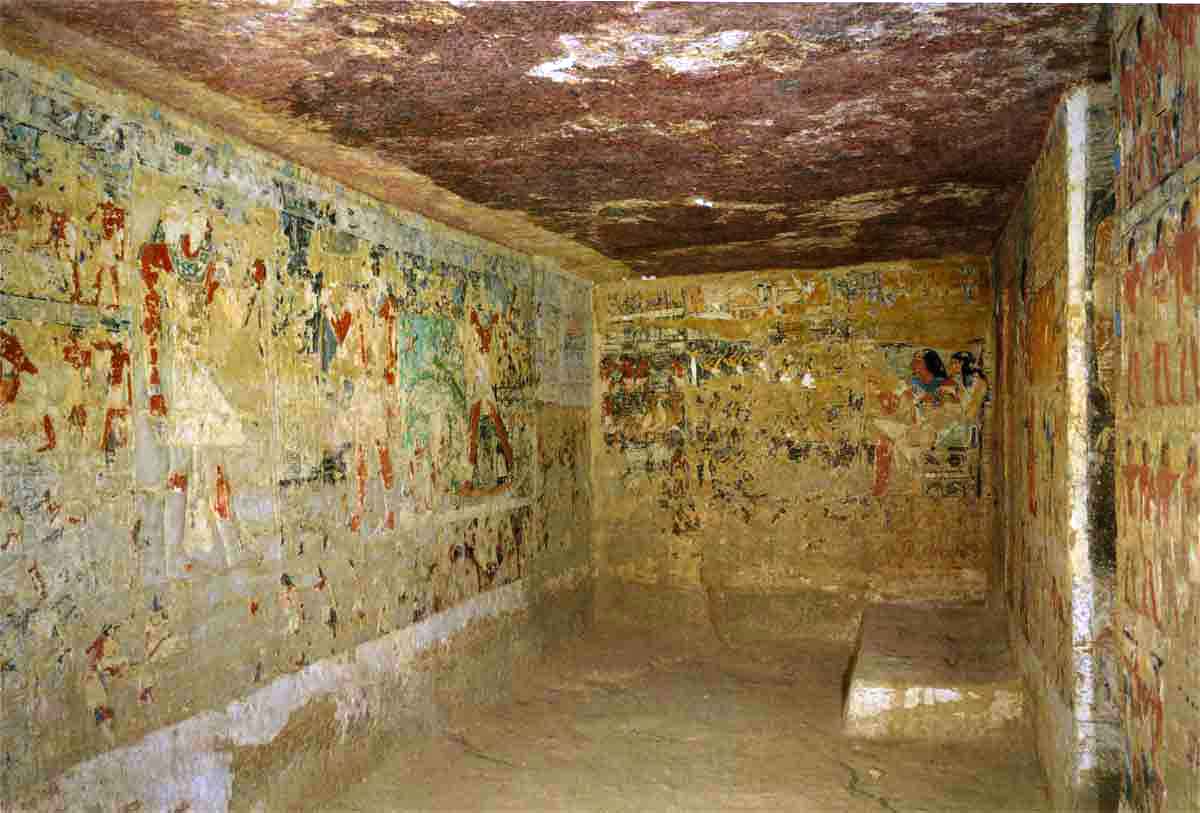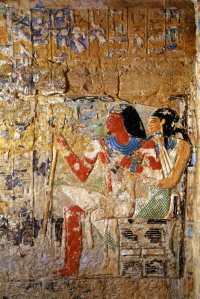jueves, 29 de agosto de 2013
domingo, 25 de agosto de 2013
miércoles, 21 de agosto de 2013
PYRAMID of WNIS - THE_SNAKE_SPELLS
http://www.youtube.com/watch?v=MPV_N2VIuDc
PYRAMID of WNIS - THE_SNAKE_SPELLS
PYRAMID of WNIS - THE_SNAKE_SPELLS
El himno canibal
http://www.youtube.com/watch?v=jM7-LqTj5L8
El Himno Caníbal de los Textos de las Pirámides. V Dinastía. [J. M. serrano Delgado, Textos para la Historia Antigua de Egipto (Madrid 1993) 240-241].
“El cielo está tormentoso; se oscurecen las estrellas.
Las bóvedas (celestes) se estremecen; tiemblan los huesos del dios-tierra.
Los planetas (?) se quedan quietos,
cuando ven que Unas aparece en gloria, poderoso,
como un dios que vive de sus padres,
que se nutre de sus madres.
Unas es el señor de la astucia,
cuya madre ignora su nombre.
La gloria de Unas está en el cielo;
su poder está en el Horizonte
como su padre Atón, que lo ha creado.
Cuando lo creó, él (Unas) ya era más fuerte que él.
Los Ka de Unas están tras él;
sus facultades están bajo sus pies.
Sus dioses están sobre él; su Uraeus en su coronilla,
la serpiente-guía de Unas en su frente,
ojeadora de espíritus cuya llama consume (?).
Los poderes de Unas lo están protegiendo.
Unas es el toro del cielo, que conquista a voluntad,
que vive de la existencia de cada dios, que devora sus entrañas,
cuando se acercan con sus cuerpos llenos de magia
desde la Isla de la Llama.
Unas es uno (bien) provisto, que reúne a sus espíritus.
Unas ha aparecido glorioso como el Grande, Señor de Siervos.
Se sienta dando la espalda a Geb;
será él quien juzgue, en compañía de "Aquel-cuyo-nombre-está-oculto”,
en este día del sacrificio de los Ancianos.
Unas es un señor de ofrendas, que anuda el cordel,
que prepara, él mismo, su comida.
Unas es quien devora a la gente y vive de los dioses,
señor de mensajeros, que envía instrucciones.
Es "El-que-Aferra-los-Cuernos" que está en Kehau quien los ata para Unas.
Es la (serpiente) "Que-Alza-la-Cabeza" la que para él los vigila, la que para él los retiene.
Es "El-Que-Está-sobre-los-Sauces" quien los amarra para él. Es Khonsu quien mata a los Señores, quien los estrangula para Unas, quien extrae para él lo que hay dentro de sus cuerpos. Al mensajero es a quien envía para castigar.
Es Shesmu quien los trocea para Unas,
quien prepara con ellos para él un guiso en sus calderos de la tarde (?).
Es Unas quien se come su magia, quien se traga sus espíritus.
Sus Grandes son su alimento matutino,
sus Medianos son su alimento vespertino,
sus Pequeños son su alimento nocturno.
Sus Viejos (Hombres) y sus Viejas (Mujeres) son su combustible.
Las Grandes-Del-Cielo-Septentrional son las que le encienden el fuego
en los calderos que los contienen junto con los muslos de sus mayores
Los que están en el cielo sirven a Unas;
se le limpian los calderos con los pies de sus mujeres.
Él ha circundado los dos cielos enteros;
Él ha rodeado las Dos Orillas (=Egipto).
Unas es un gran Poder que prevalece entre los Poderes.
Unas es la imagen sagrada, la más sagrada de todas la imágenes del Gran (Dios) (?).
A aquel a quien se encuentra en su camino, lo devora trozo a trozo (?).
El lugar de Unas está al frente de todos los nobles que están en el Horizonte,
porque Unas es un dios, el más antiguo de los Antiguos.
Le sirven millares, le hacen ofrendas centenares.
Le ha sido otorgado el título de Gran Poder por Orion, padre de los dioses
Unas ha vuelto a aparecer en gloria en el cielo,
ha sido coronado como señor del Horizonte,
ha quebrado vértebras y espinazos,
se ha apoderado de los corazones de los dioses.
Se ha comido la (Corona) Roja, ha engullido la Verde.
Unas se alimenta de los pulmones de los Sabios,
y queda saciado viviendo de sus corazones y su magia.
A Unas le repugna lamer los shebesu (?) que están en la Roja.
Se regocija porque sus magias están en su vientre.
Las dignidades de Unas no le serán arrebatadas.
Ha engullido el conocimiento de todo dios.
El tiempo de vida de Unas es la eternidad; su frontera es el infinito,
en esta su dignidad de "Él-Quiere-Él-Hace; No-Quiere-No-Hace",
él, que está dentro de los límites del Horizonte eternamente.
Mira, su poder está en el vientre de Unas,
como excedente de alimento de los dioses,
que ha sido cocinado para Unas de sus huesos.
Mira, su poder está con Unas;
sus sombras (han sido arrebatadas) a sus propietarios.
Pues Unas es quien aparece y perdura siempre (?),
y los criminales no tendrán poder para destruir el lugar favorito de Unas
entre los vivos de esta tierra, por toda la eternidad”.
El Himno Caníbal de los Textos de las Pirámides. V Dinastía. [J. M. serrano Delgado, Textos para la Historia Antigua de Egipto (Madrid 1993) 240-241].
“El cielo está tormentoso; se oscurecen las estrellas.
Las bóvedas (celestes) se estremecen; tiemblan los huesos del dios-tierra.
Los planetas (?) se quedan quietos,
cuando ven que Unas aparece en gloria, poderoso,
como un dios que vive de sus padres,
que se nutre de sus madres.
Unas es el señor de la astucia,
cuya madre ignora su nombre.
La gloria de Unas está en el cielo;
su poder está en el Horizonte
como su padre Atón, que lo ha creado.
Cuando lo creó, él (Unas) ya era más fuerte que él.
Los Ka de Unas están tras él;
sus facultades están bajo sus pies.
Sus dioses están sobre él; su Uraeus en su coronilla,
la serpiente-guía de Unas en su frente,
ojeadora de espíritus cuya llama consume (?).
Los poderes de Unas lo están protegiendo.
Unas es el toro del cielo, que conquista a voluntad,
que vive de la existencia de cada dios, que devora sus entrañas,
cuando se acercan con sus cuerpos llenos de magia
desde la Isla de la Llama.
Unas es uno (bien) provisto, que reúne a sus espíritus.
Unas ha aparecido glorioso como el Grande, Señor de Siervos.
Se sienta dando la espalda a Geb;
será él quien juzgue, en compañía de "Aquel-cuyo-nombre-está-oculto”,
en este día del sacrificio de los Ancianos.
Unas es un señor de ofrendas, que anuda el cordel,
que prepara, él mismo, su comida.
Unas es quien devora a la gente y vive de los dioses,
señor de mensajeros, que envía instrucciones.
Es "El-que-Aferra-los-Cuernos" que está en Kehau quien los ata para Unas.
Es la (serpiente) "Que-Alza-la-Cabeza" la que para él los vigila, la que para él los retiene.
Es "El-Que-Está-sobre-los-Sauces" quien los amarra para él. Es Khonsu quien mata a los Señores, quien los estrangula para Unas, quien extrae para él lo que hay dentro de sus cuerpos. Al mensajero es a quien envía para castigar.
Es Shesmu quien los trocea para Unas,
quien prepara con ellos para él un guiso en sus calderos de la tarde (?).
Es Unas quien se come su magia, quien se traga sus espíritus.
Sus Grandes son su alimento matutino,
sus Medianos son su alimento vespertino,
sus Pequeños son su alimento nocturno.
Sus Viejos (Hombres) y sus Viejas (Mujeres) son su combustible.
Las Grandes-Del-Cielo-Septentrional son las que le encienden el fuego
en los calderos que los contienen junto con los muslos de sus mayores
Los que están en el cielo sirven a Unas;
se le limpian los calderos con los pies de sus mujeres.
Él ha circundado los dos cielos enteros;
Él ha rodeado las Dos Orillas (=Egipto).
Unas es un gran Poder que prevalece entre los Poderes.
Unas es la imagen sagrada, la más sagrada de todas la imágenes del Gran (Dios) (?).
A aquel a quien se encuentra en su camino, lo devora trozo a trozo (?).
El lugar de Unas está al frente de todos los nobles que están en el Horizonte,
porque Unas es un dios, el más antiguo de los Antiguos.
Le sirven millares, le hacen ofrendas centenares.
Le ha sido otorgado el título de Gran Poder por Orion, padre de los dioses
Unas ha vuelto a aparecer en gloria en el cielo,
ha sido coronado como señor del Horizonte,
ha quebrado vértebras y espinazos,
se ha apoderado de los corazones de los dioses.
Se ha comido la (Corona) Roja, ha engullido la Verde.
Unas se alimenta de los pulmones de los Sabios,
y queda saciado viviendo de sus corazones y su magia.
A Unas le repugna lamer los shebesu (?) que están en la Roja.
Se regocija porque sus magias están en su vientre.
Las dignidades de Unas no le serán arrebatadas.
Ha engullido el conocimiento de todo dios.
El tiempo de vida de Unas es la eternidad; su frontera es el infinito,
en esta su dignidad de "Él-Quiere-Él-Hace; No-Quiere-No-Hace",
él, que está dentro de los límites del Horizonte eternamente.
Mira, su poder está en el vientre de Unas,
como excedente de alimento de los dioses,
que ha sido cocinado para Unas de sus huesos.
Mira, su poder está con Unas;
sus sombras (han sido arrebatadas) a sus propietarios.
Pues Unas es quien aparece y perdura siempre (?),
y los criminales no tendrán poder para destruir el lugar favorito de Unas
entre los vivos de esta tierra, por toda la eternidad”.
Mastaba de Merefnebef
imagenes de sorisnet.net
| |||||||||
  |
| ||||||||
viernes, 9 de agosto de 2013
Suscribirse a:
Comentarios (Atom)















































